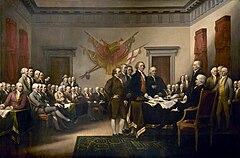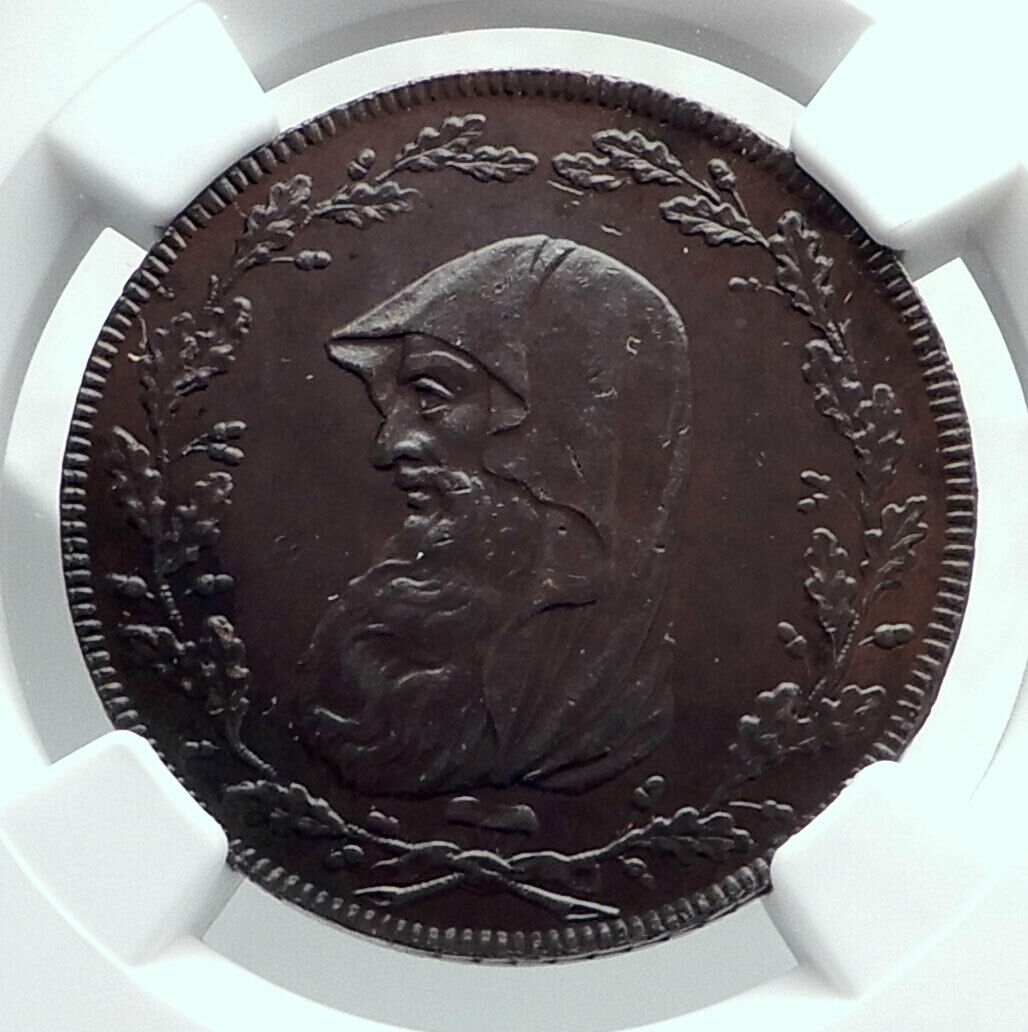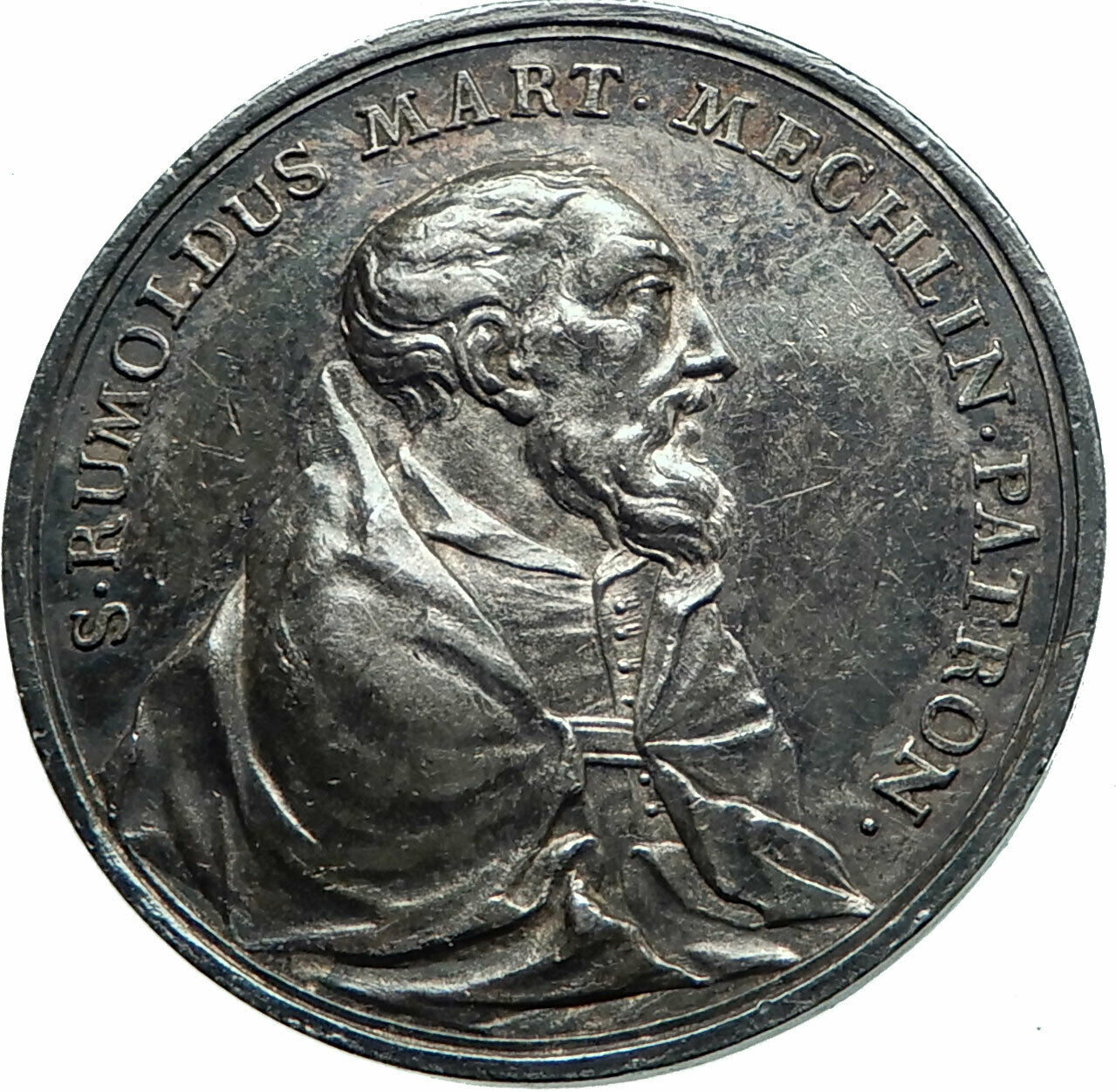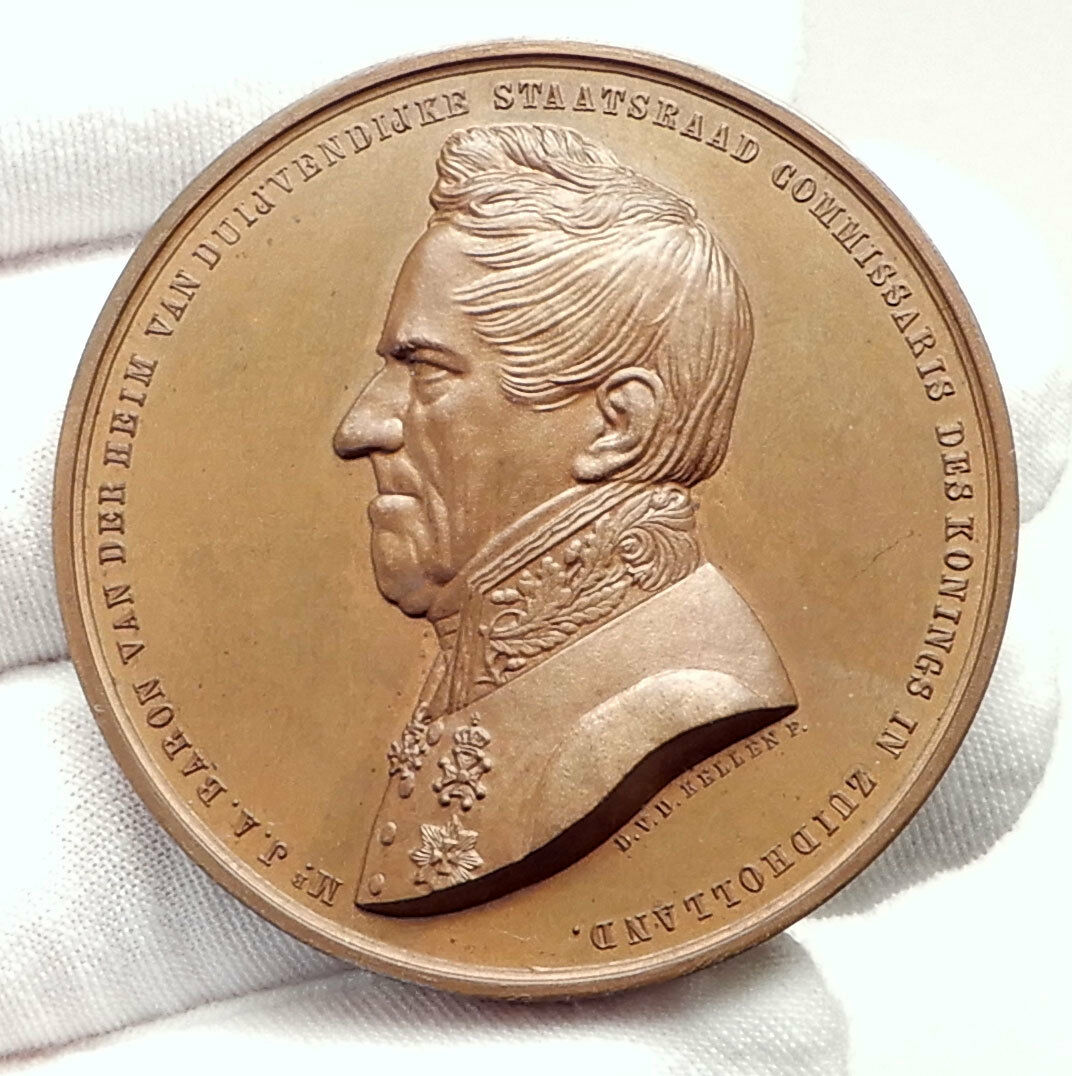|
United States of America
Franklin Mint’s Official Bicentennial Visit Medal
Queen of Denmark – Margrethe II
1976 Proof Silver Medal 51mm (48.60 grams) .925 Silver (1.4436 oz. ASW)
Reference: N# 201592
H. M. MARGRETHE II QUEEN OF DENMARK, Queen Margrethe II offset facing, royal crest to left.
UNITED STATES BICENTENNIAL VISIT MAY 1976, Liberty Bell with mint mark on right side of bell under bell holder.
Edge Lettering:
GRAINS STERLING 750 2302
Medal Notes:
From the included letter (1976, Franklin Mint):
…Her Majesty, who is the youngest reigning queen in the world, was
warmly received by the people of the United States during her recent
Bi-centennial Visit. President and Mrs. Ford hosted a luncheon for
Queen Margrethe at the White House, and receptions in her honor were held in
a number of major cities throughout the country.
You are bidding on the exact item pictured, provided with a Certificate of Authenticity and Lifetime Guarantee of Authenticity.
 Margrethe II (Margrethe Alexandrine Þórhildur Ingrid, born 16 April 1940) is Queen of Denmark and commander-in-chief of the Danish Defence. Margrethe II (Margrethe Alexandrine Þórhildur Ingrid, born 16 April 1940) is Queen of Denmark and commander-in-chief of the Danish Defence.
Born into the House of Glücksburg, a cadet branch of the House of Oldenburg, Margrethe is the eldest child of Frederick IX of Denmark and Ingrid of Sweden. She became heir presumptive to her father in 1953, when a constitutional amendment allowed women to inherit the throne. Margrethe succeeded her father upon his death on 14 January 1972. On her accession, she became the first female monarch of Denmark since Margrethe I, ruler of the Scandinavian kingdoms in 1375–1412 during the Kalmar Union. In 1967, she married Henri de Laborde de Monpezat, with whom she had two sons: Crown Prince Frederik and Prince Joachim.
Margrethe is known for her strong archaeological passion and has participated in several excavations, including in Italy, Egypt, Denmark and South America. She shared this interest with her grandfather Gustaf VI Adolf of Sweden, with whom she spent some time unearthing artefacts near Etruria in 1962.
As of 2022, Margrethe has, as sovereign, received 42 official state visits and she has undertaken 55 foreign state visits herself. She and the royal family have made several other foreign visits. Support for the monarchy in Denmark has been and remains consistently high at around 82%, as does Margrethe’s personal popularity.
Shortly after King Frederick IX delivered his New Year’s Address to the Nation at the 1971/72 turn of the year, he fell ill. At his death 14 days later, 14 January 1972, Margrethe succeeded to the throne at the age of 31, becoming the first female Danish sovereign under the new Act of Succession. She was proclaimed Queen from the balcony of Christiansborg Palace 15 January 1972 by Prime Minister Jens Otto Krag. Queen Margrethe II relinquished all the monarch’s former titles except the title to Denmark, hence her style “By the Grace of God, Queen of Denmark” (Danish: Margrethe den Anden, af Guds Nåde Danmarks Dronning). The Queen chose the motto: God’s help, the love of The People, Denmark’s strength.
In her first address to the people, Queen Margrethe II said:
My beloved father, our King, is dead. The task that my father had carried for nearly 25 years is now resting on my shoulders. I pray to God to give me help and strength to carry the heavy heritage. May the trust that was given to my father also be granted to me.
The Queen’s main tasks are to represent the Kingdom abroad and to be a unifying figure at home. She performs the latter by opening exhibitions, attending anniversaries and inaugurating bridges, among other things. She receives foreign ambassadors, awards, honours and medals.
As an unelected public official, the Queen takes no part in party politics and does not express any political opinions. Although she has the right to vote, she opts not to do so to avoid even the appearance of partisanship.
The Queen holds a meeting with the prime minister and the foreign affairs minister every Wednesday, unless she or the prime minister is outside of the kingdom.
After an election where the incumbent prime minister does not have a majority behind him or her, the Queen holds a “Dronningerunde” (Queen’s meeting) in which she meets the chairmen of each of the Danish political parties.
Each party has the choice of selecting a royal investigator to lead these negotiations or alternatively, give the incumbent prime minister the mandate to continue his or her government as is. In theory each party could choose its own leader as royal investigator, the social liberal Det Radikale Venstre did so in 2006, but often only one royal investigator is chosen plus the prime minister, before each election. The leader who, at that meeting succeeds in securing a majority of the seats in the Folketing, is by royal decree charged with the task of forming a new government. (It has never happened in more modern history that any party has held a majority on its own.)
Once the government has been formed, it is formally appointed by the Queen. Officially, it is the Queen who is the head of government, and she therefore presides over the Council of State (privy council), where the acts of legislation which have been passed by the parliament are signed into law. In practice, nearly all of the Queen’s formal powers are exercised by the Cabinet of Denmark.
The Queen is also the colonel-in-chief of the Princess of Wales’s Royal Regiment (Queen’s and Royal Hampshires), an infantry regiment of the British Army, following a tradition in her family.
Queen Margrethe II marked her Silver Jubilee in 1997 with a religious service and a gala dinner attended by fellow Scandinavian royals. She celebrated her Ruby Jubilee, the 40th year on the throne, on 14 January 2012. This was marked by a church service, concert, carriage procession, gala banquet at Christiansborg Palace and numerous TV interviews.
In an interview within the 2016 book De dybeste rødder (The Deepest Roots), according to historians at the Saxo Institute of the University of Copenhagen she showed a change in attitude to immigration towards a more restrictive stance. She stated that the Danish people should have more explicitly clarified the rules and values of Danish culture in order to be able to teach them to new arrivals. She further stated that the Danes in general have underestimated the difficulties involved in successful integration of immigrants, exemplified with the rules of a democracy not being clarified to Muslim immigrants and a lack of readiness to enforce those rules. This was received as a change in line with the attitude of the Danish people.
The Queen’s Golden Jubilee was marked on 14 January 2022, with celebrations to take place later in the year.
 The American Revolution was an ideological and political revolution that occurred in British America between 1765 and 1791. The Americans in the Thirteen Colonies formed independent states that defeated the British in the American Revolutionary War (1775–1783), gaining independence from the British Crown, establishing the constitution that created the United States of America, the first modern constitutional liberal democracy. The American Revolution was an ideological and political revolution that occurred in British America between 1765 and 1791. The Americans in the Thirteen Colonies formed independent states that defeated the British in the American Revolutionary War (1775–1783), gaining independence from the British Crown, establishing the constitution that created the United States of America, the first modern constitutional liberal democracy.
American colonists objected to being taxed by the British Parliament, a body in which they had no direct representation. Before the 1760s, Britain’s American colonies had enjoyed a high level of autonomy in their internal affairs, which were locally governed by colonial legislatures. During the 1760s, however, the British Parliament passed a number of acts that were intended to bring the American colonies under more direct rule from the British metropole and increasingly intertwine the economies of the colonies with those of Britain. The passage of the Stamp Act of 1765 imposed internal taxes on official documents, newspapers and most things printed in the colonies, which led to colonial protest and the meeting of representatives from several colonies at the Stamp Act Congress. Tensions relaxed with the British repeal of the Stamp Act, but flared again with the passage of the Townshend Acts in 1767. The British government deployed troops to Boston in 1768 to quell unrest, leading to the Boston Massacre in 1770. The British government repealed most of the Townshend duties in 1770, but retained the tax on tea in order to symbolically assert Parliament’s right to tax the colonies. The burning of the Gaspee in Rhode Island in 1772, the passage of the Tea Act of 1773 and the resulting Boston Tea Party in December 1773 led to a new escalation in tensions. The British responded by closing Boston Harbor and enacting a series of punitive laws which effectively rescinded Massachusetts Bay Colony’s privileges of self-government. The other colonies rallied behind Massachusetts, and twelve of the thirteen colonies sent delegates in late 1774 to form a Continental Congress for the coordination of their resistance to Britain. Opponents of Britain were known as Patriots or Whigs, while colonists who retained their allegiance to the Crown were known as Loyalists or Tories.
Open warfare erupted when British regulars sent to capture a cache of military supplies were confronted by local Patriot militia at Lexington and Concord on April 19, 1775. Patriot militia, joined by the newly formed Continental Army, then put British forces in Boston under siege by land and their forces withdrew by sea. Each colony formed a Provincial Congress, which assumed power from the former colonial governments, suppressed Loyalism, and contributed to the Continental Army led by Commander in Chief General George Washington. The Patriots unsuccessfully attempted to invade Quebec and rally sympathetic colonists there during the winter of 1775–76.
The Continental Congress declared British King George III a tyrant who trampled the colonists’ rights as Englishmen, and they pronounced the colonies free and independent states on July 4, 1776. The Patriot leadership professed the political philosophies of liberalism and republicanism to reject rule by monarchy and aristocracy. The Declaration of Independence proclaimed that all men are created equal, though it was not until later centuries that constitutional amendments and federal laws would incrementally grant equal rights to African Americans, Native Americans, poor white men, and women.
The British captured New York City and its strategic harbor in the summer of 1776. The Continental Army captured a British army at the Battle of Saratoga in October 1777, and France then entered the war as an ally of the United States, expanding the war into a global conflict. The British Royal Navy blockaded ports and held New York City for the duration of the war, and other cities for brief periods, but they failed to destroy Washington’s forces. Britain priorities shifted southward, attempting to hold the Southern states with the anticipated aid of Loyalists that never materialized. British general Charles Cornwallis captured an American army at Charleston, South Carolina in early 1780, but he failed to enlist enough volunteers from Loyalist civilians to take effective control of the territory. Finally, a combined American and French force captured Cornwallis’ army at Yorktown in the fall of 1781, effectively ending the war. The Treaty of Paris was signed on September 3, 1783, formally ending the conflict and confirming the new nation’s complete separation from the British Empire. The United States took possession of nearly all the territory east of the Mississippi River and south of the Great Lakes, with the British retaining control of northern Canada, and French ally Spain taking back Florida.
Among the significant results of the war were American independence and the end of British mercantilism in America, opening up worldwide trade for the United States—including with Britain. Around 60,000 Loyalists migrated to other British territories, particularly to Canada, but the great majority remained in the United States. The Americans soon adopted the United States Constitution, replacing the weak wartime Confederation and establishing a comparatively strong national government structured as a federal republic, which included an elected executive, a national judiciary, and an elected bicameral Congress representing states in the Senate and the population in the House of Representatives. It is the world’s first federal democratic republic founded on the consent of the governed. Shortly after a Bill of Rights was ratified as the first ten amendments, guaranteeing a number of fundamental rights used as justification for the revolution.
 The United States of America (USA), commonly known as the United States (U.S. or US) or America, is a country composed of 50 states, a federal district, five major self-governing territories, and various possessions. At 3.8 million square miles (9.8 million km2), the United States is the world’s third or fourth largest country by total area and is slightly smaller than the entire continent of Europe’s 3.9 million square miles (10.1 million km2). With a population of over 327 million people, the U.S. is the third most populous country. The capital is Washington, D.C., and the largest city by population is New York. Forty-eight states and the capital’s federal district are contiguous in North America between Canada and Mexico. The State of Alaska is in the northwest corner of North America, bordered by Canada to the east and across the Bering Strait from Russia to the west. The State of Hawaii is an archipelago in the mid-Pacific Ocean. The U.S. territories are scattered about the Pacific Ocean and the Caribbean Sea, stretching across nine official time zones. The extremely diverse geography, climate, and wildlife of the United States make it one of the world’s 17 megadiverse countries. The United States of America (USA), commonly known as the United States (U.S. or US) or America, is a country composed of 50 states, a federal district, five major self-governing territories, and various possessions. At 3.8 million square miles (9.8 million km2), the United States is the world’s third or fourth largest country by total area and is slightly smaller than the entire continent of Europe’s 3.9 million square miles (10.1 million km2). With a population of over 327 million people, the U.S. is the third most populous country. The capital is Washington, D.C., and the largest city by population is New York. Forty-eight states and the capital’s federal district are contiguous in North America between Canada and Mexico. The State of Alaska is in the northwest corner of North America, bordered by Canada to the east and across the Bering Strait from Russia to the west. The State of Hawaii is an archipelago in the mid-Pacific Ocean. The U.S. territories are scattered about the Pacific Ocean and the Caribbean Sea, stretching across nine official time zones. The extremely diverse geography, climate, and wildlife of the United States make it one of the world’s 17 megadiverse countries.
.svg/85px-Great_Seal_of_the_United_States_(obverse).svg.png) Paleo-Indians migrated from Siberia to the North American mainland at least 12,000 years ago. European colonization began in the 16th century. The United States emerged from the thirteen British colonies established along the East Coast. Numerous disputes between Great Britain and the colonies following the French and Indian War led to the American Revolution, which began in 1775, and the subsequent Declaration of Independence in 1776. The war ended in 1783 with the United States becoming the first country to gain independence from a European power. The current constitution was adopted in 1788, with the first ten amendments, collectively named the Bill of Rights, being ratified in 1791 to guarantee many fundamental civil liberties. The United States embarked on a vigorous expansion across North America throughout the 19th century, acquiring new territories, displacing Native American tribes, and gradually admitting new states until it spanned the continent by 1848. Paleo-Indians migrated from Siberia to the North American mainland at least 12,000 years ago. European colonization began in the 16th century. The United States emerged from the thirteen British colonies established along the East Coast. Numerous disputes between Great Britain and the colonies following the French and Indian War led to the American Revolution, which began in 1775, and the subsequent Declaration of Independence in 1776. The war ended in 1783 with the United States becoming the first country to gain independence from a European power. The current constitution was adopted in 1788, with the first ten amendments, collectively named the Bill of Rights, being ratified in 1791 to guarantee many fundamental civil liberties. The United States embarked on a vigorous expansion across North America throughout the 19th century, acquiring new territories, displacing Native American tribes, and gradually admitting new states until it spanned the continent by 1848.
 During the second half of the 19th century, the Civil War led to the abolition of slavery. By the end of the century, the United States had extended into the Pacific Ocean, and its economy, driven in large part by the Industrial Revolution, began to soar. The Spanish-American War and World War I confirmed the country’s status as a global military power. The United States emerged from World War II as a global superpower, the first country to develop nuclear weapons, the only country to use them in warfare, and a permanent member of the United Nations Security Council. During the Cold War, the United States and the Soviet Union competed in the Space Race, culminating with the 1969 Moon landing. The end of the Cold War and the collapse of the Soviet Union in 1991 left the United States as the world’s sole superpower. During the second half of the 19th century, the Civil War led to the abolition of slavery. By the end of the century, the United States had extended into the Pacific Ocean, and its economy, driven in large part by the Industrial Revolution, began to soar. The Spanish-American War and World War I confirmed the country’s status as a global military power. The United States emerged from World War II as a global superpower, the first country to develop nuclear weapons, the only country to use them in warfare, and a permanent member of the United Nations Security Council. During the Cold War, the United States and the Soviet Union competed in the Space Race, culminating with the 1969 Moon landing. The end of the Cold War and the collapse of the Soviet Union in 1991 left the United States as the world’s sole superpower.
The United States is the world’s oldest surviving federation. It is a federal republic and a representative democracy, “in which majority rule is tempered by minority rights protected by law”. The United States is a founding member of the United Nations, World Bank, International Monetary Fund, Organization of American States (OAS), and other international organizations. The United States is a highly developed country, with the world’s largest economy by nominal GDP and second-largest economy by PPP, accounting for approximately a quarter of global GDP. The U.S. economy is largely post-industrial, characterized by the dominance of services and knowledge-based activities, although the manufacturing sector remains the second-largest in the world. The United States is the world’s largest importer and the second largest exporter of goods, by value. Although its population is only 4.3% of the world total, the U.S. holds 33% of the total wealth in the world, the largest share of global wealth concentrated in a single country. It also suffers from growing levels of income inequality and wealth inequality.
The United States ranks among the highest nations in several measures of socioeconomic performance, including human development, per capita GDP, and productivity per person. The United States is the foremost military power in the world, making up a third of global military spending, and is a leading political, cultural, and scientific force internationally.
|







 Margrethe II (Margrethe Alexandrine Þórhildur Ingrid, born 16 April 1940) is Queen of Denmark and commander-in-chief of the Danish Defence.
Margrethe II (Margrethe Alexandrine Þórhildur Ingrid, born 16 April 1940) is Queen of Denmark and commander-in-chief of the Danish Defence.
 The American Revolution was an ideological and political revolution that occurred in British America between 1765 and 1791. The Americans in the Thirteen Colonies formed independent states that defeated the British in the American Revolutionary War (1775–1783), gaining independence from the British Crown, establishing the constitution that created the United States of America, the first modern constitutional liberal democracy.
The American Revolution was an ideological and political revolution that occurred in British America between 1765 and 1791. The Americans in the Thirteen Colonies formed independent states that defeated the British in the American Revolutionary War (1775–1783), gaining independence from the British Crown, establishing the constitution that created the United States of America, the first modern constitutional liberal democracy.  The United States of America (USA), commonly known as the United States (U.S. or US) or America, is a country composed of 50 states, a federal district, five major self-governing territories, and various possessions. At 3.8 million square miles (9.8 million km2), the United States is the world’s third or fourth largest country by total area and is slightly smaller than the entire continent of Europe’s 3.9 million square miles (10.1 million km2). With a population of over 327 million people, the U.S. is the third most populous country. The capital is Washington, D.C., and the largest city by population is New York. Forty-eight states and the capital’s federal district are contiguous in North America between Canada and Mexico. The State of Alaska is in the northwest corner of North America, bordered by Canada to the east and across the Bering Strait from Russia to the west. The State of Hawaii is an archipelago in the mid-Pacific Ocean. The U.S. territories are scattered about the Pacific Ocean and the Caribbean Sea, stretching across nine official time zones. The extremely diverse geography, climate, and wildlife of the United States make it one of the world’s 17 megadiverse countries.
The United States of America (USA), commonly known as the United States (U.S. or US) or America, is a country composed of 50 states, a federal district, five major self-governing territories, and various possessions. At 3.8 million square miles (9.8 million km2), the United States is the world’s third or fourth largest country by total area and is slightly smaller than the entire continent of Europe’s 3.9 million square miles (10.1 million km2). With a population of over 327 million people, the U.S. is the third most populous country. The capital is Washington, D.C., and the largest city by population is New York. Forty-eight states and the capital’s federal district are contiguous in North America between Canada and Mexico. The State of Alaska is in the northwest corner of North America, bordered by Canada to the east and across the Bering Strait from Russia to the west. The State of Hawaii is an archipelago in the mid-Pacific Ocean. The U.S. territories are scattered about the Pacific Ocean and the Caribbean Sea, stretching across nine official time zones. The extremely diverse geography, climate, and wildlife of the United States make it one of the world’s 17 megadiverse countries. .svg/85px-Great_Seal_of_the_United_States_(obverse).svg.png) Paleo-Indians migrated from Siberia to the North American mainland at least 12,000 years ago. European colonization began in the 16th century. The United States emerged from the thirteen British colonies established along the East Coast. Numerous disputes between Great Britain and the colonies following the French and Indian War led to the American Revolution, which began in 1775, and the subsequent Declaration of Independence in 1776. The war ended in 1783 with the United States becoming the first country to gain independence from a European power. The current constitution was adopted in 1788, with the first ten amendments, collectively named the Bill of Rights, being ratified in 1791 to guarantee many fundamental civil liberties. The United States embarked on a vigorous expansion across North America throughout the 19th century, acquiring new territories, displacing Native American tribes, and gradually admitting new states until it spanned the continent by 1848.
Paleo-Indians migrated from Siberia to the North American mainland at least 12,000 years ago. European colonization began in the 16th century. The United States emerged from the thirteen British colonies established along the East Coast. Numerous disputes between Great Britain and the colonies following the French and Indian War led to the American Revolution, which began in 1775, and the subsequent Declaration of Independence in 1776. The war ended in 1783 with the United States becoming the first country to gain independence from a European power. The current constitution was adopted in 1788, with the first ten amendments, collectively named the Bill of Rights, being ratified in 1791 to guarantee many fundamental civil liberties. The United States embarked on a vigorous expansion across North America throughout the 19th century, acquiring new territories, displacing Native American tribes, and gradually admitting new states until it spanned the continent by 1848.  During the second half of the 19th century, the Civil War led to the abolition of slavery. By the end of the century, the United States had extended into the Pacific Ocean, and its economy, driven in large part by the Industrial Revolution, began to soar. The Spanish-American War and World War I confirmed the country’s status as a global military power. The United States emerged from World War II as a global superpower, the first country to develop nuclear weapons, the only country to use them in warfare, and a permanent member of the United Nations Security Council. During the Cold War, the United States and the Soviet Union competed in the Space Race, culminating with the 1969 Moon landing. The end of the Cold War and the collapse of the Soviet Union in 1991 left the United States as the world’s sole superpower.
During the second half of the 19th century, the Civil War led to the abolition of slavery. By the end of the century, the United States had extended into the Pacific Ocean, and its economy, driven in large part by the Industrial Revolution, began to soar. The Spanish-American War and World War I confirmed the country’s status as a global military power. The United States emerged from World War II as a global superpower, the first country to develop nuclear weapons, the only country to use them in warfare, and a permanent member of the United Nations Security Council. During the Cold War, the United States and the Soviet Union competed in the Space Race, culminating with the 1969 Moon landing. The end of the Cold War and the collapse of the Soviet Union in 1991 left the United States as the world’s sole superpower. 




